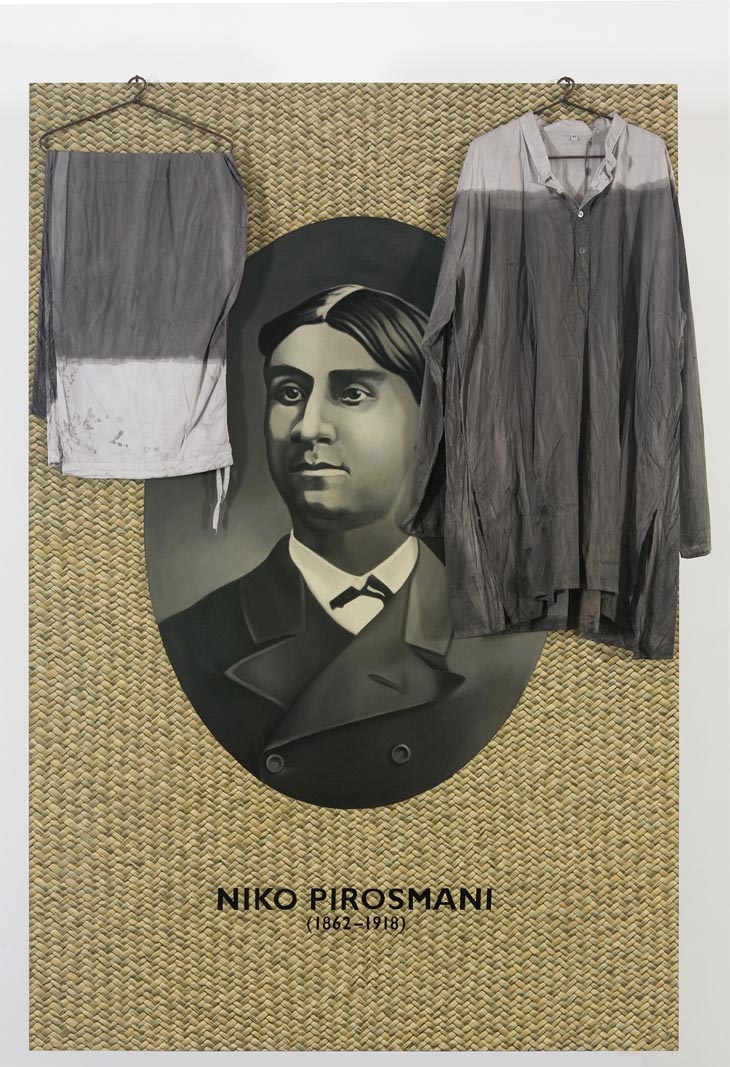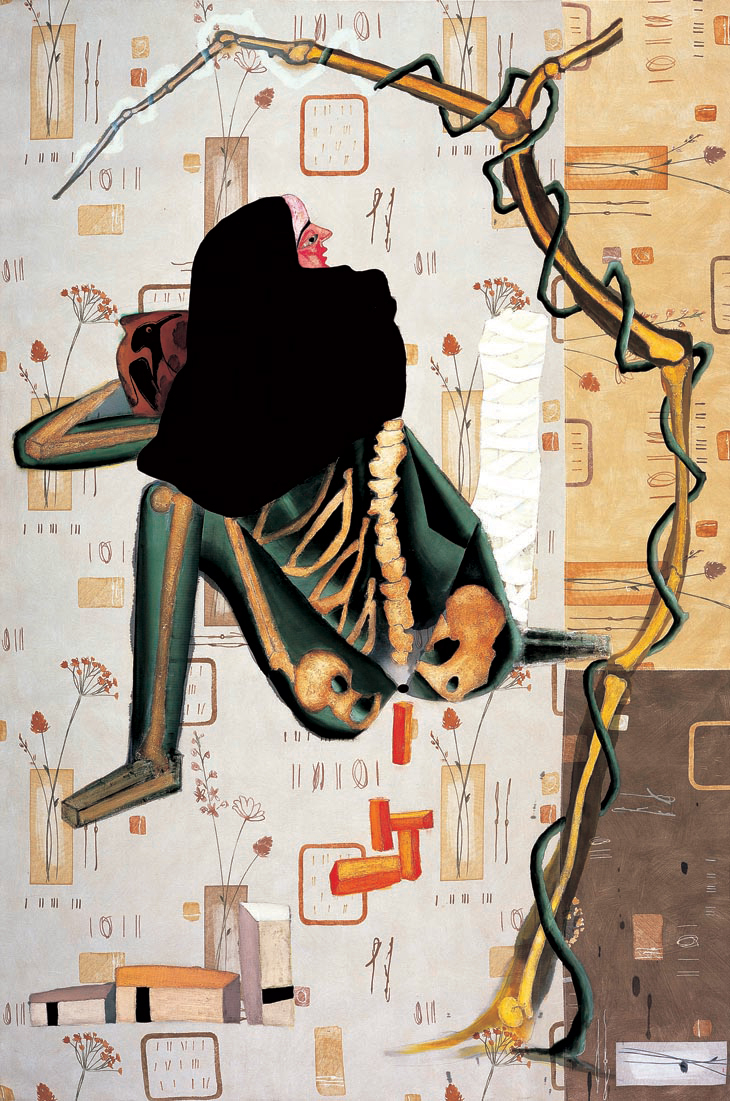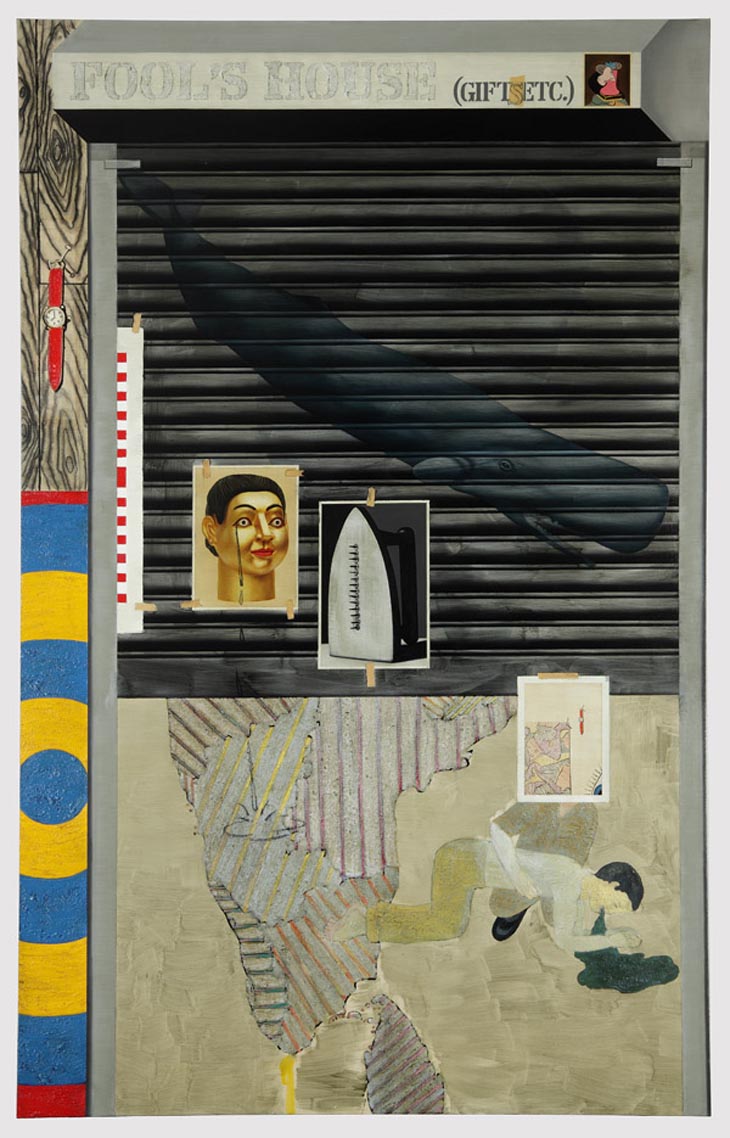


Atul Dodiya
In Portrait of Niko Pirosmani (1862-1918) Dodiya portrays the Georgian primitivist Niko Pirosmani, who was revered for having invented a new technique of painting during periods of solitude and poverty. The portrait of Pirosmani initially formed part of Dodiya’s large scale exhibition ’Shri Khakhar Prasanna’ which was dedicated to his friend, the late painter Bhupen Khakhar. Believing that Khakhar was influenced by Pirosmani, Dodiya wanted to include the Georgian painter in his show. The artist uses found objects such as the cotton Kurta and pyjamas which hang over this painting. Here they are dyed a different colour in tribute to Khakhar, who dyed his kurta pyjamas black so he could wear them as an apron in his studio.
Woman from Kabul is a work about living in Afghanistan at the turn of the new millennium. The artist recalls a country rich in history and resources that has collapsed under the weight of war. A figure of an elderly woman, stripped of most of her black burka, squats over a very decorative backdrop of wall paper. Her body is revealed as skin and bones, representative of the oppression and squalor that has become endemic of the city. Dodiya’s work is a potent reminder of the plight of the refugee.
Through his paintings and assemblages, Atul Dodiya engages with both political and art history in a way that entwines global /public memory and local/personal experience. In his most recent series of paintings Dodiya appropriates the images and styles of famous artworks. By doing this he pays homage to his influences, but also ‘borrows’ their identities through a kind of painting role-play: copying becomes a form of ‘channelling’ or re-enactment, weaving the master’s identities and ideas to Dodiya’s own (and vice versa). Fool’s House is a tribute to Jasper Johns, the American pop artist renowned for painting generic graphic motifs such as targets, maps and text fonts. The fragmented composition of this painting – divided into rectangular shapes – references the design typical of Johns; the segments of the canvas contain quotes of a Johns map and target. Dodiya first came to prominence with his paintings done on roll down security shutters, and in this work he imprints his own history upon his hero’s, re-conceiving Johns’s international abstraction as a local shop front. The ‘taped photographs’ in the scene make reference to Johns’s 1984 painting Racing Thoughts which used this device to quip famous artworks such as the Mona Lisa; in Fool’s House, one of Dodiya’s snap shots contains an image of Manray’s Cadeau, emphasising his painting as an offering or gift.

